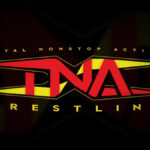The decision is yours to make there on the bookshelves: Who was more instrumental to the success of ECW: Paul Heyman and Tommy Dreamer, or Raven, Terry Funk and Shane Douglas? The answer is pretty simple and requires you to purchase both books.

Hardcore History: The Extremely Unauthorized Story of ECW by Scott E. Williams has been out for half a year now, from Sports Publishing L.L.C., and deserves many of the kudos that it has already received.
The new challenger on the shelves is The Rise & Fall of ECW by Thom Loverro, with the massive marketing arm of WWE Books and Simon & Schuster behind it.
In truth, neither is a complete history of ECW, that renegade Philadelphia-based promotion that hugely influenced the direction of pro wrestling from 1992 to 2001.
After all, can the story of ECW be told without talking to Heyman, Dreamer or Taz? Of course not. That’s the major flaw of Williams’ Hardcore History; but the flip side is that Williams got incredible access to the fascinating minds of Raven, Funk and Douglas for his project, something that Loverro’s Rise & Fall lacks.
So, like the two DVD releases from the last couple of years, The Rise & Fall of ECW from WWE and the independently-done Forever Hardcore, the true tale is somewhere between the two stories.Hardcore History is Williams’ third wrestling book, after the autobiographies of Terry Funk and Bill Watts. A crime reporter at the Galveston County Daily News in Texas, he has provided yet another incredibly well-researched, well-written book that is entertaining through and through.
It’s sort of like VH1’s Behind The Music in print; there are sections you can hear in that voice: “While ECW swam along, the two biggest fish in the wrestling pond were at war with each other, and both WCW and the WWF had repeatedly proven their willingness to shade the line between wrestling and reality, a line ECW had been trampling over for years.”
Williams seems to have uncovered just about every stone he was allowed to. He talked to the big name wrestlers like Funk, Raven, Douglas and Jerry Lynn; he talked to arena managers and ECW’s local promoters; he talked to the syndication folks. Besides those people under WWE deals whom were apparently shut out from talking about their past with Williams (Heyman, Dreamer, Rob Van Dam, Taz, etc.), the other missing link is ECW founder Tod Gordon. Of course, Gordon has a book of his own coming out this fall from Toronto’s ECW Press entitled Sex, Drugs and Wrestling: The Truth, the Lies and the Extremes. And nobody got Sabu to talk.
Hardcore History doesn’t shy away from the numbers either, talking in specifics about who was owed what when the company dissolved, and where the cash went over the years. It’s fascinating, yet doesn’t dominate the book at all.
The only complaint, and it’s an understandable one, is that the last chapter about the first One Night Stand pay-per-view and the Hardcore Homecoming shows organized by Douglas seem rushed; no doubt a last-minute attempt was made to include it and capitalize on the resurgence of ECW.
Coming as it does to coincide with the return of ECW to television on a weekly basis on The Sci-Fi Channel, Loverro’s The Rise & Fall of ECW would seem perfectly suited for a big run. Yet as a book, given the long lead times necessary to go to press, it already seems dated.The real story today is how the swell of fan support for last year’s One Night Stand PPV, and success of the DVD The Rise & Fall of ECW have gotten WWE to the point of launching a third brand.
It also seems to have been vetted. There’s not a lot of sex, drugs and rock ‘n’ roll. Tazz is never referred to as “Taz” (an issue, perhaps, only of concern to a “zed” loving Canadian).
Then there’s Van Dam. Much of the popularity of RVD in ECW was because of his sly, wink-wink references to the drug culture and his “high” flying lifestyle. “His high-energy style in the ring, combined with his cool personality, made him a fan favorite,” writes Loverro.
But maybe he didn’t get RVD. Loverro, a respected sports columnist at the Washington Times, doesn’t really come off as a wrestling fan. Perhaps this is a plus to some people; to someone like this reviewer, it’s an annoyance when errors like these slip through: Terry Funk defeating Gene Kiniski for the NWA World title; blinding someone in an angle, as happened to Sandman, was hardly new in pro wrestling; Mando Guerrero is left out of the list of brothers.
(For a real fan’s take on ECW, seek out John Lister’s Turning the Tables: The Story of Extreme Championship Wrestling. It’s a totally different animal than these two big-league books.)
At some point, Loverro also made the decision to include complete results from many of the big Philadelphia ECW shows. It’s pretty cool seeing who was on the cards, especially in the early non-PPV days. However, if the likes of J.T. Smith, Hack Meyers and Jason Knight are being introduced into the narrative, shouldn’t an effort have been made to at least tell what happened to them?If Williams’ book seems like a Behind The Music episode, Loverro’s tome seems, at times, like a printed version of The Rise & Fall of ECW DVD. It has the same WWE spin on what made ECW work and what made it fail. The coolest non-wrestler he digs up is Ron Buffone, the production guru that made ECW so unique.
The other issues are a virtual wash. Both books have lots of great photos, but Rise & Fall has more. There’s no doubt a higher actual word count in Williams’ 256-page book, compared to the 272 pages in Loverro’s, but that’s owing in big part to WWE Books’ insistence on a larger font, white space and (seemingly random) photos every couple of pages.
And a familiar bitch about both books, however, there should have been an index.
In the end, it comes down to completionism. Neither book is quite the whole package. The missing names from each book are just too big to ignore. If I had to choose one, it would be Hardcore History, but that’s with the caveat that I’ll be adding Tod Gordon’s book to the oeuvre come this fall.












